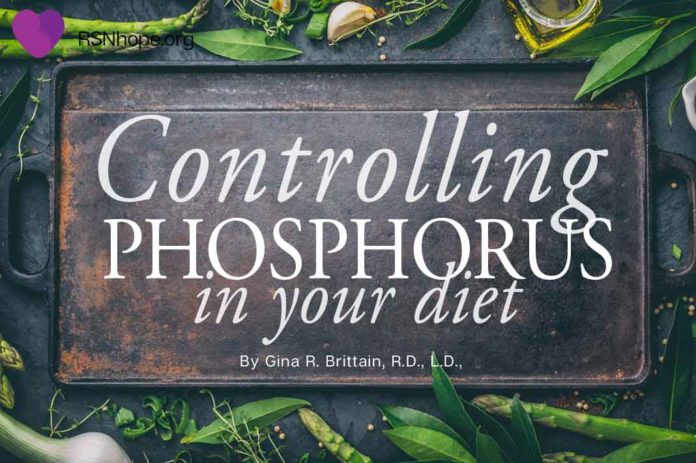The trouble with phosphorus: Too much of a good thing
For many people, phosphorus—present in many foods—is a good thing, working with calcium to build strong bones and keep other parts of the body healthy. However, those living with chronic kidney disease (CKD), whose kidneys are unable to filter out excess phosphorus, need to keep close track of phosphorus levels in order to stay healthier.
When the kidneys can no longer keep phosphorus at the right level, it builds and becomes harmful. High phosphorus levels may weaken bones and put a person at risk for increased bone fractures as well as increased risk for cardiovascular disease, which is a disease of the heart and blood vessels.
Though it’s important to avoid foods that are very high in phosphorus in order to help reduce wear and tear on the body’s systems, most CKD patients will also need medication to support that balance. This medication is known as a phosphate binder. There are many options for phosphate binders, but the number of pills needed for managing phosphorus levels can be burdensome. Of the four phosphorus binders on the market, Velphoro 1 is cited as having the most significant reduction for a patients’ pill burden. In studies, most people reached their phosphorus goal with 3 to 4 tablets per day. Usually phosphate binders are taken within minutes before or immediately after meals and snacks.
A kidney-friendly diet: Tips for reducing phosphate consumption
People who are working to lower their consumption of phosphorus-rich foods can choose natural phosphorus-containing foods. The natural phosphorus content will be absorbed less by the body. The following foods will help to satisfy the appetite while absorbing less of the phosphorus:
• Fresh all-natural chicken, steak, fish, turkey
• Natural cheeses (cheddar, goat, mozzarella)
• Heart-healthy cooking oils (olive, canola, vegetable)
• Whole grains (oats, rice, whole wheat pasta)
• Unsalted nuts (peanuts, almonds, peanut butter)
• Low-sodium canned beans (kidney, pinto, chickpeas, garbanzo)
Though it can be difficult to always avoid high phosphorus foods, foods that contain additional phosphate additives will cause your body to absorb more phosphorus. The following foods contain phosphate additives and should be avoided:
• Processed cheese (American, cheese dip, spray cheese)
• Fast food
• Enhanced meats (frozen, pre-cooked)
• Dark cola
• Prepared frozen foods (microwavable meals, snack items)
• Baked goods (pastries, snack cakes)
Thriving
• Talk to your dietitian about managing your unique kidney-healthy diet.
• Read ingredients to hunt down hidden phosphorus (phosphates) so you
can keep your level in the healthy range.
• Swap out high-phosphorus foods for lower-phosphorus ones. Try these
three recipes at www.freseniuskidneycare.com/eating-well:
1. Velphoro is distributed by Fresenius Medical Care North America.
Find more helpful, kidney-friendly diet and nutrition guidance at
www.freseniuskidneycare.com/eating-well
Additional Resources
Phosphorus, the Mineral You Need to Know
A better binder for a better you!
Eating well with chronic kidney disease
Grocery List: Foods to Choose for End Stage Renal Disease
Kidney Friendly Recipes
 Gina R. Brittain, RD, L.D, is the Lead Dietitian for the Kentucky Region of Fresenius Kidney Care and maintains a Home Therapy patient population. Gina earned her Bachelor of Science degree from the University of Cincinnati and has over 20 years experience as a Registered Dietitian. Since 2017, she has advocated for her patients to thrive while on dialysis.
Gina R. Brittain, RD, L.D, is the Lead Dietitian for the Kentucky Region of Fresenius Kidney Care and maintains a Home Therapy patient population. Gina earned her Bachelor of Science degree from the University of Cincinnati and has over 20 years experience as a Registered Dietitian. Since 2017, she has advocated for her patients to thrive while on dialysis.
Web ID: 4016







